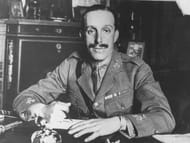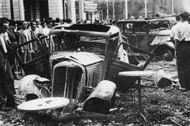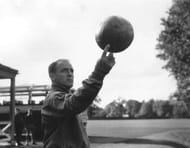Real Madrid versus FC Barcelona. A match capable of grabbing the attention of the entire world, even on a Monday. It is a battle between two giants of world football or simply between one Goliath against another. A battle between these two superpowers of world football is often termed the "El Clasico" which translates to "The Classic" referring to the close magnanimous encounters among the two.
The rivalry between these two sides is different from everything else. It cannot be compared to the household Merseyside or Milan derby nor to the fight between Catholic and sectarian sects in Glasgow (Celtic against Rangers).
Also read: Barcelona vs Real Madrid: 5 most controversial moments in El Clasico history
El Clasico is more than just another derby in the world because of the social and political differences between the two teams which arguably makes it the biggest rivalry in the world. Here, we take a look in detail as to how a political rivalry between two major cities of Spain came to be known worldwide as the El Clasico.
The first meeting
Joan Gamper founded FC Barcelona along with a few foreigners in 1899 while Real Madrid were founded by local Spaniards in 1902. Even before the first match took place, the importance given to Madrid in the country's matters sowed the seeds of discontent in the minds of the Barcelona public.
King of Spain, Alfonso XIII arranged a tournament in 1902 which included three teams, Real Madrid, FC Barcelona and Basque club, Vizcaya. The Catalans won the first ever match against Real Madrid 3-1 with the Los Blancos referring to this loss as "the defeat against six foreigners in one team".
FC Barcelona were the dominant team along with Athletic Bilbao leading to the years of the Spanish Civil War, which started the rivalry between these two teams in the first place.
The Spanish Civil War (1936-39)
When the war began in the 1930s, military leader Francisco Franco staged a Coup d’état in 1936 which led to the worst bloodshed in Spain's history. Franco's nationalist party won the war in 1939 and he started to take revenge on all the forces that were going against his regime.
FC Barcelona's president Josep Sunyol was executed by Franco's men without a trial which angered the sentiments of the local Catalan public. It was during the war and its aftermath when Barcelona's slogan of "Mes Que un club" came to the fore as the club served as a way out for the oppression the people were facing on a daily basis from Franco's regime.
The fixture which intensified the rivalry
In the year 1943, the Copa Del Generalissimo (now known as the Copa del Rey; Generalissimo was a tribute to Franco) saw an incident in the semi-finals which took the rivalry between Real Madrid and Barcelona to a different level altogether.
At Les Corts, Barcelona won the first leg 3-0 with the game being marred by a number of refereeing errors. In the wake of the second leg in Madrid, Barcelona fans were banned from entering the stadium.
To add to that, Barcelona's team bus was pelted with stones on arrival which caused tensions to soar. Inside the ground, bottles and coins were thrown at the club’s players. The hosts Madrid went ahead 2-0 before a Barcelona player was wrongly shown a red card. What followed next was carnage of the highest order as Barcelona went behind 8-0 at half time.
The Catalan players refused to play the second half as they were furious with the partial refereeing and hostile ground conditions. Franco's men then barged into the visitors’ dressing room and warned them to take the field or else risk going to jail. This brutal misuse of power led Real Madrid to win 11-1 but such were the incidents that took place in this match that this game does not occupy a proud moment in Real Madrid's history.
Also read: Real Madrid 11-1 Barcelona: The story behind the most controversial El Clasico of all time
Spanish history and football expert Sid Lowe's comments on this game summed up the match perfectly. He said, "This was the game that first formed the identification of Madrid as the team of the dictatorship and Barcelona as its victims."
The controversial transfers which took over the rivalry
Ladislao Kubala was considered the finest player at the beginning of the 1950s when FC Barcelona snatched him from the clutches of Real Madrid who were also interested in the playmaker. Another big name which caused relations to turn sour was Alfredo Di Stefano.
Both the clubs were confused as to the identity of di Stefano's parent club which led to both of them claiming to have signed secured his signature. FIFA intervened and ruled in Barcelona's favour.
The Spanish federation, who were a puppet of the government, then stepped in and banned the signing of foreign players in Spain for every club except Real Madrid. This led to Di Stefano moving to the Bernabeu resulted in a huge uproar in Spain. It was then ruled that the Argentine would play for four years in Spain – two for Real Madrid and two for Barcelona.
Also read: 5 incredible stories from El Clasico in recent memory
Subsequently, it was rumoured that Franco forced FC Barcelona’s president to back out of this agreement which led the Los Blancos to sign him permanently. His signing led to a shift in momentum in Spain as with him in the side, Real Madrid won eight league titles and five European cups.
Luis Figo was another player who caused the rivalry to reach new heights. Real Madrid president Florentino Perez wanted Figo to sign for his side and reached an agreement before the transfer window.
However, the Portuguese himself reassured Barcelona fans saying, “I want to reassure fans that Luis Figo, with all the certainty in the world, will be at the Camp Nou on July 24 to start the season."
Figo then decided to go back on his word and joined Barcelona's rivals on the day he was supposed to join the Catalans for pre-season training. The Portuguese received backlash from the Barcelona loyalists which was evident from a pig’s head that was thrown at him in a match at Camp Nou.
Bottom Line
Real Madrid against FC Barcelona was called the ‘El Derbi’ in Spain with the title of Clasico being reserved for the clash between River Plate and Boca Juniors. But since the turn of the 90s, Barcelona rose to power and changed the dynamics of football and also their rivalry with Real Madrid. This led to the matchup between the two great sides being coined the ‘El Clasico’.
This game's television ratings are higher than any other sporting event at the club level. It has always seen the best players in the world take centre stage and face off against one another.
(Video: We talk football)
More than that, the people of these cities have been ingrained with a feeling of hate towards each other which has been a part of their DNA forever. Phil Ball, the author of the book Morbo – The Story of Spanish football – said it brilliantly, "They hate each other with an intensity that can truly shock the outsider".




